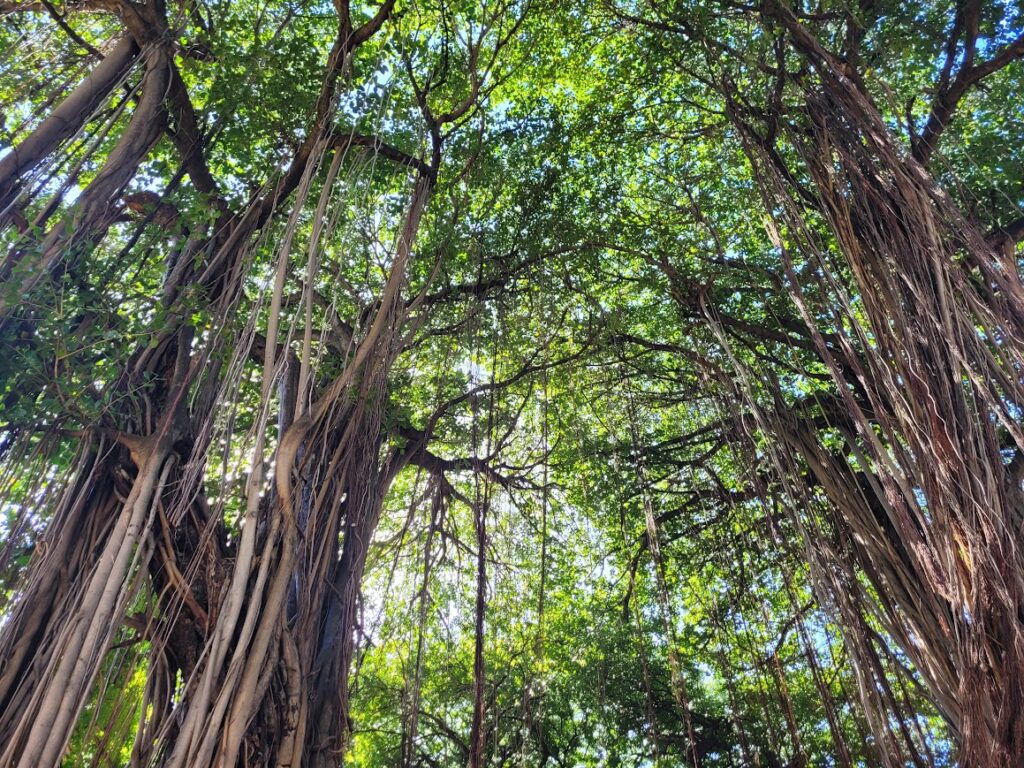In the heart of Port Louis, just a few minutes’ walk from the rush of Central Market, there’s a place that feels like it belongs to another rhythm. Les Jardins De La Compagnie isn’t loud or grand or flashy. Instead, it draws you in with something quieter. Banyan trees with long aerial roots dip toward the ground like green curtains, filtering the sun into soft patches of shade. There’s a breeze that carries the scent of roasted peanuts, damp stone, and sometimes the faintest trace of frangipani.
What used to be a swamp and later a cemetery is now one of the capital’s oldest green spaces, holding centuries of stories. Back in the 18th century, this area was known as L’Enfoncement. By 1790, the French colonial government had bought the land from the Compagnie des Indes to transform it into a space for the public. Governor Decaen planted the first trees, re-routed the Pouce River, and even built a theatre that entertained audiences until a cyclone brought it down in 1818. In those early years, revolution-era justice also left its mark here. The site once housed a guillotine nicknamed Temple de Douceur. Today, a plaque tucked among the trees quietly remembers it.
But despite its layered history, the feeling in the garden today is light, reflective, sometimes almost playful. You’ll see children chasing pigeons near the dolphin fountain. A street-food vendor might be folding dholl puri beside a quiet iron bench. Bronze statues of Mauritian thinkers and writers like Léoville L’Homme and Rémy Ollier line the central path, turning the garden into something of a literary walk too.
Over the years, Les Jardins De La Compagnie has gone through small transformations. In 2021, the Port Louis City Council gave it a thoughtful facelift, repainting the cast-iron benches and fountains, installing energy-saving lights, and cleaning up the overgrown sections. It hasn’t lost its charm. In fact, now it glows softly in the evenings when the light plays off the banyan roots and the leaves shimmer in orange and green tones.
What makes this garden so special isn’t just its history or even its layout. It’s how it holds the energy of the city without the noise. It feels like the lungs of Port Louis. A place where you can pause between museum visits and food stalls, sit by the fountain with a fresh roti chaud, and watch the city breathe.
If you’re visiting the Natural History Museum, which sits right on the garden’s edge, or you’re coming from Chinatown or the Jummah Masjid, take ten minutes to stop here. It doesn’t ask for your time, but it always gives something back.
Les Jardins De La Compagnie is especially charming in the mid-morning or late afternoon. The sun softens, the benches are shaded, and the nearby food stalls begin to stir with their own rhythms. You might even stumble upon a cultural plaque or a few poetic lines engraved in Travellers’ Lane, a narrow pathway near the garden dedicated to the Mauritian poet Malcolm de Chazal.
Staying nearby makes it easy to include the garden in your city stroll. The Labourdonnais Waterfront Hotel and Le Suffren Hotel & Marina are within a kilometre and offer a comfortable base close to the Caudan Waterfront. If you prefer something more flexible, Citadelle Mall Apartments provide spacious self-catering units just a short walk away.
A few practical tips: the garden opens daily from 6 am to 6 pm. Entry is free, though there’s a small charge of Rs 10 for public restrooms. It’s very safe during daylight hours, but locals generally avoid it after dark. You might want to bring some insect repellent, especially after rainfall, since the standing water near the fountains can attract mosquitoes.
For a deeper experience, consider joining a guided walking tour that includes the garden. Many food-focused walks stop here between Central Market tastings. Others combine cultural highlights like Jummah Masjid, the Port Louis Theatre, and even a detour through Travellers’ Lane before heading into Chinatown.
Whether you’re hunting for history, poetry, or just a moment of calm, Les Jardins De La Compagnie quietly delivers. It doesn’t rush or demand. It simply invites you to sit, look up at the roots reaching down, and remember that sometimes, the best way to meet a city is to slow down right in the middle of it.



